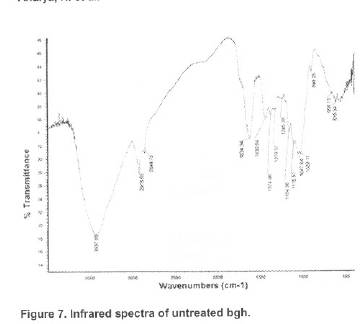
| Back | Conclusion |
Next |
Concluding Remarks
Biosorption observations on the ability of bgh to remove Cr (VI) indicate the biomass of having potential of application to sequester heavy metals from low concentration waste waters.Containing approximately 52% crude fibre composed of cellulose, hemicellulose and lignin, the bgh biomatrix indicates the presence of many – OH and – COOH groups in the linocellulosic moieties. Hydrogen of these groups is capable of ion exchange with metal cations.
Protein content in bgh is less than 5%, which is advantageous over the protein rich algal and fungal biomass projected as metal biosorbents, since proteinious materials are likely to putrefy under moist conditions. Further, most metal sorption reported in literature is based on algal and fungal biomass, which must be cultured, collected from their natural habitats and pre-processed, if available as discards and transported under special conditions, thus introducing the factor of additional costs. In contrast, bgh as an agro-industrial waste has negligible cost and has also proved to be an efficient biosorbent for the removal of Cr (VI) ions.
Figure 8: Infrared spectra of bgh reacted with 100mg/l Cr (VI)